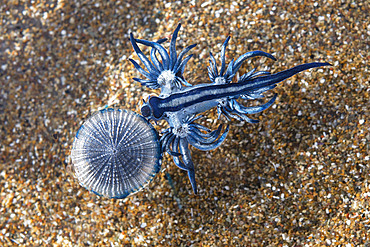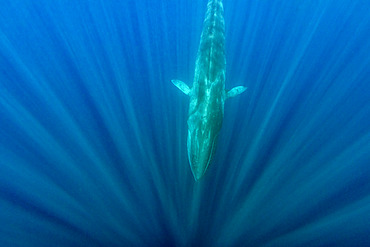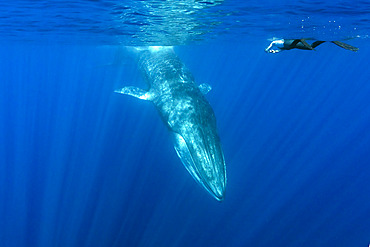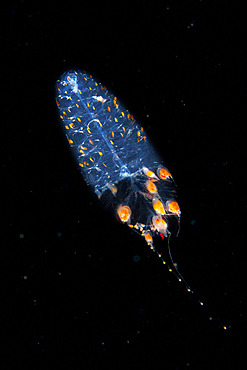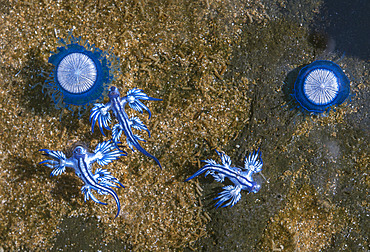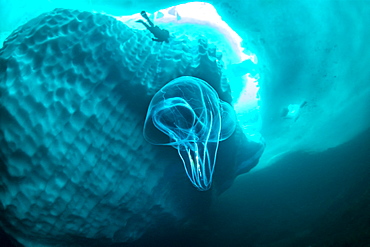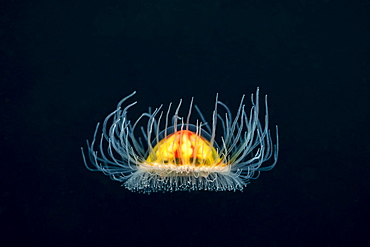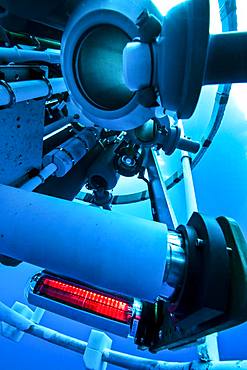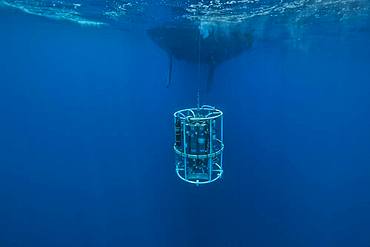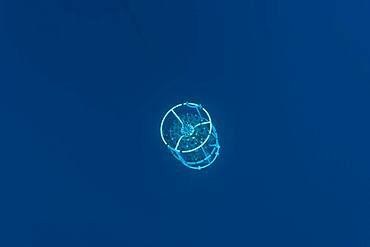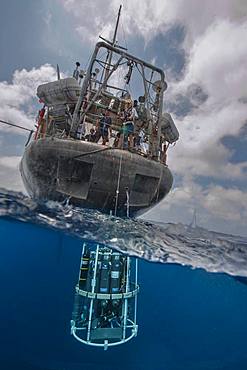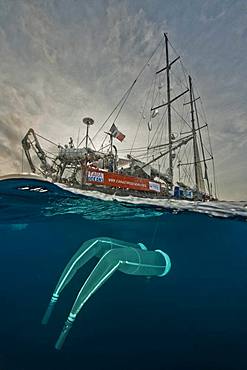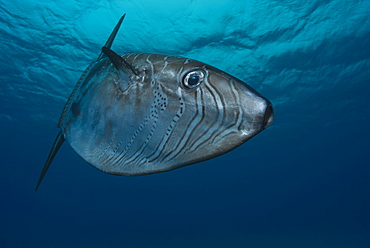Recent searches
Loading...
860-291053 - Salps, also known colloquially as ?sea grape?) or salpa, salpae or salpas is a barrel-shaped, planktic tunicate. Antarctic Peninsula, Antarctica
860-290418 - Fin whale (Balaenoptera physalus) is the largest baleen whale found in the Mediterranean Sea. It is the world?s second largest cetacean, after the blue whale. Pelagos Sanctuary for Mediterranean Marine Mammals, Mediterranean Sea
860-290424 - Sperm whale, (Physeter macrocephalus). Vulnerable (IUCN). The sperm whale is the largest of the toothed whales. Sperm whales are known to dive as deep as 1,000 meters in search of squid to eat. Pelagos Sanctuary for Mediterranean Marine Mammals, Mediterranean Sea
860-290417 - Bottlenose dolphins (Tursiops truncatus) Pelagos Sanctuary for Mediterranean Marine Mammals, France, Mediterranean Sea
860-289987 - Galapagos shark (Carcharhinus galapagensis) in the Fauna and Flora Sanctuary of Malpelo Island, Colombia
860-289962 - Blue Dragon (Glaucus atlanticus). Small slug that measures only about 2 cm and is generally associated with the Portuguese man of war (Physalia physalis), although it also usually appears in intertidal pools. Marine invertebrates of the Canary Islands, Tenerife.
860-290416 - Risso's dolphin (Grampus griseus), Pelagos Sanctuary for Mediterranean Marine Mammals, France, Mediterranean Sea
860-290422 - Snorkeler with Loggerhead turtle (Caretta caretta), one of the three species found in Mediterranean Sea. Pelagos Sanctuary for Mediterranean Marine Mammals, Mediterranean Sea
860-289946 - Porbeagle (Lamna nasus) off the coast of Brittany, France, English Channel
860-290420 - Fin whale (Balaenoptera physalus) is the largest baleen whale found in the Mediterranean Sea. It is the world?s second largest cetacean, after the blue whale. Pelagos Sanctuary for Mediterranean Marine Mammals, Mediterranean Sea
860-290260 - BLUE DRAGON (Glaucus atlanticus). Small slug that measures only about 2 cm and is generally associated with the Portuguese man of war (Physalia physalis), although it also usually appears in intertidal pools. Marine invertebrates of the Canary Islands, Tenerife.
860-289992 - Porbeagle shark (Lamna nasus) off the coast of Brittany, Channel, France
860-289993 - Porbeagle shark (Lamna nasus) off the coast of Brittany, Channel, France
860-290419 - Fin whale (Balaenoptera physalus) is the largest baleen whale found in the Mediterranean Sea. It is the world?s second largest cetacean, after the blue whale. Pelagos Sanctuary for Mediterranean Marine Mammals, Mediterranean Sea
860-290421 - Snorkeler and fin whale (Balaenoptera physalus) is the largest baleen whale found in the Mediterranean Sea. It is the world?s second largest cetacean, after the blue whale. Pelagos Sanctuary for Mediterranean Marine Mammals, Mediterranean Sea
860-290381 - Zooplankton. Pelagic micro organism that is part of plankton (unidentified species). It lives dragged by the marine currents and it is common to observe it in spring. Marine invertebrates of the Canary Islands.
860-289963 - Blue Dragon (Glaucus atlanticus) hanging. Small slug that measures only about 2 cm and is generally associated with the Portuguese man of war (Physalia physalis), although it also usually appears in intertidal pools. Marine invertebrates of the Canary Islands, Tenerife.
860-290259 - BLUE DRAGON (Glaucus atlanticus). A small peacic slug that measures only about 2 cm and is generally associated with the Portuguese frigatebird (Physalia physalis) or the blue button (Porpita porpita) on which it feeds. They can also appear in intertidal pools. Marine invertebrates of the Canary Islands, Tenerife.
860-290382 - Zooplankton. Pelagic micro organism that is part of plankton (unidentified species). It lives dragged by the marine currents and it is common to observe it in spring. Marine invertebrates of the Canary Islands.
860-288008 - (Mnemiopsis leidyi), the warty comb jelly or sea walnut. Only in springtime, when the hard winter slowly subsides, are the ice-cold waters suitable for divers who can dive around a iceberg that floats in crystal-clear water, Tasiilaq, East Greenland
860-288004 - A tiny Benthic Hydromedusa, with a bell size of less than one centimeter, (Ptychogastria polaris), Tasiilaq, East Greenland
860-288001 - A tiny Benthic Hydromedusa, with a bell size of less than one centimeter, (Ptychogastria polaris), swimming in front of an iceberg, Tasiilaq, East Greenland
860-288007 - A tiny Benthic Hydromedusa, with a bell size of less than one centimeter, (Ptychogastria polaris), Tasiilaq, East Greenland
860-288006 - A tiny Benthic Hydromedusa, with a bell size of less than one centimeter, (Ptychogastria polaris), Tasiilaq, East Greenland
860-288002 - (Mnemiopsis leidyi), the warty comb jelly or sea walnut. Only in springtime, when the hard winter slowly subsides, are the ice-cold waters suitable for divers who can dive around a iceberg that floats in crystal-clear water, Tasiilaq, East Greenland
860-287996 - A tiny Benthic Hydromedusa, with a bell size of less than one centimeter, (Ptychogastria polaris), swimming in front of an iceberg, Tasiilaq, East Greenland
860-288005 - A tiny Benthic Hydromedusa, with a bell size of less than one centimeter, (Ptychogastria polaris), swimming in front of an iceberg, Tasiilaq, East Greenland
860-288003 - A tiny Benthic Hydromedusa, with a bell size of less than one centimeter, (Ptychogastria polaris), Tasiilaq, East Greenland
860-287998 - (Clione limacina), known as the naked sea butterfly, sea angel is a pelagic sea slug, only few centimeters in length, swim in front of an iceberg, Tasiilaq, East Greenland
860-287453 - Tara Oceans Expeditions - May 2011. CTD-Rosette (Conductivity Temperature Density instrumental platform with 7 additional sensors), Galapagos
860-287454 - Tara Oceans Expeditions - May 2011. CTD-Rosette (Conductivity Temperature Density instrumental platform with 7 additional sensors), galapagos
860-287451 - Tara Oceans Expeditions - May 2011. Surface plancton nets, deployed from Tara, Galapagos
860-287455 - Tara Oceans Expeditions - May 2011. CTD-Rosette (Conductivity Temperature Density instrumental platform with 7 additional sensors), Galapagos
860-287452 - Tara Oceans Expeditions - May 2011. CTD-Rosette (Conductivity Temperature Density instrumental platform with 7 additional sensors)
860-287456 - Tara Oceans Expeditions - May 2011. CTD-Rosette (Conductivity Temperature Density instrumental platform with 7 additional sensors), Galapagos
860-287449 - Tara Oceans Expeditions - May 2011. Surface plancton nets, deployed from Tara, Galapagos
860-287450 - Tara Oceans Expeditions - May 2011. Tara with deployed plancton nets. On "station", the boat is drifting without engine or sails. Tara Oceans, a unique expedition: Tara Oceans is the very first attempt to make a global study of marine plankton, a form of sea life that includes organisms as small as viruses and bacterias, and as big as medusas. Our goal is to better understand planktonic ecosystems by exploring the countless species, learning about interactions among them and with their environment. Marine plankton is the only ecosystem that is almost continuous over the surface of the Earth. Studying plankton is like taking the pulse of our planet. Recently, scientists have discovered the great importance of plankton for the climate: populations of plankton are affected very rapidly by variations in climate. But in turn they can influence the climate by modifying the absorption of carbon. In a context of rapid physico-chemical changes, for example the acidification observed today in the world's oceans, it is urgent to understand and predict the evolution of these particular ecosystems. Finally, plankton is an astonishing way of going back in time ? a prime source of fossils. Over the eons, plankton has created several hundred meters of sediment on the ocean floors. This allows us to go back in time, to the first oceans on Earth, and better understand the history of our biosphere. More than 12 fields of research are involved in the project, which will bring together an international team of oceanographers, ecologists, biologists, geneticists, and physicists from prestigious laboratories headed by Eric Karsenti of the European Molecular Biology Laboratory. Galapagos
860-286685 - Pyrosomes, colony hundreds to thousands individuals called zooids, cloned from one egg and bound together, Mirissa, Sri Lanka, Indian Ocean
You reached the end of search results










